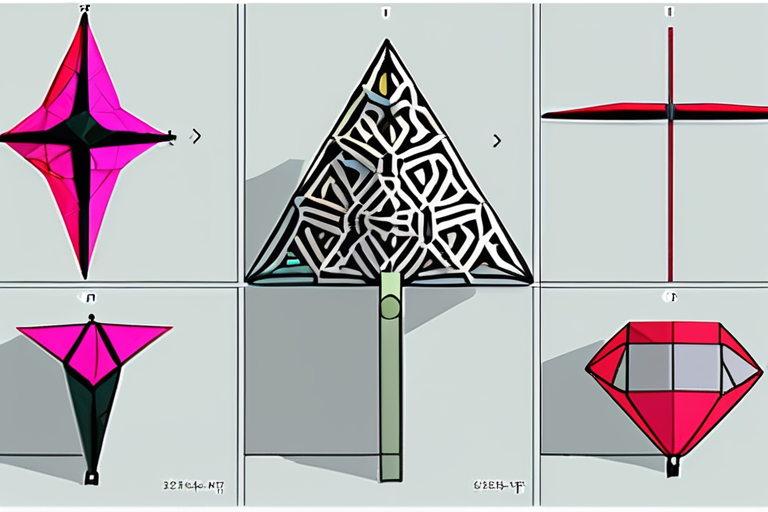The Infinite Folds of Madonna Yoder: Unraveling the Math and Magic of Origami
In a small workshop nestled in the heart of Cambridge, Massachusetts, a quiet revolution is unfolding. Behind the unassuming door lies a world of intricate patterns, precision folds, and mathematical marvels. Here, the "Queen of Tessellations," Madonna Yoder, has spent years mastering the art of origami, pushing the boundaries of what's possible with paper and human ingenuity.
As we step into her workshop, the first thing that strikes us is the sheer scale of her creations. Towering above us are majestic structures, their surfaces adorned with repeating patterns of hexagons, triangles, and other geometric shapes. Each fold, each crease, has been meticulously crafted by Yoder's skilled hands, a testament to the power of human creativity.
But what lies behind this mesmerizing world of paper art? To understand the infinite folds of Madonna Yoder, we must delve into the math that underpins them. Tessellations, as she calls them, are patterns that repeat infinitely and can be folded on a single sheet of paper. These designs have captivated mathematicians and artists for centuries, but it's only in recent years that they've gained widespread recognition.
Yoder's journey began when she was just eight years old, folding a square piece of paper over and over until it became a bird. That first fold sparked a lifelong passion for origami, which would eventually take her to the Massachusetts Institute of Technology (MIT). There, she honed her skills under the guidance of renowned mathematician and origami expert, Robert Lang.
"Origami is not just about folding paper," Yoder explains. "It's about understanding the mathematics behind it – the geometry, the symmetry, the tessellations. When you fold a piece of paper, you're creating a new reality, one that's governed by its own set of rules and patterns."
As we chat with Yoder, it becomes clear that her work is not just aesthetically pleasing but also has significant implications for society. Origami-inspired designs are being used in fields such as architecture, engineering, and even medicine. For instance, researchers have developed origami-based prototypes for self-folding robots, which could revolutionize search and rescue operations.
But what about the human side of Yoder's story? What drives someone to spend years mastering an art form that requires patience, dedication, and a willingness to push boundaries? According to Yoder, it's the sense of calm and focus that comes with folding paper.
"When I'm folding," she says, "I feel like I'm in a meditative state. It's as if my mind is quieting down, and all that's left is the paper, the folds, and the patterns. It's a way for me to connect with something deeper within myself."
As we leave Yoder's workshop, we're struck by the realization that her work represents more than just an art form – it's a testament to human ingenuity, creativity, and the power of math to inspire and transform our world.
The Future of Origami: Latest Developments
In recent years, origami has undergone a resurgence in popularity, with researchers exploring new applications for tessellations in fields such as materials science, biology, and even space exploration. Some of the latest developments include:
Origami-inspired self-folding robots: Researchers have developed prototypes that can fold themselves into complex shapes, paving the way for search and rescue operations.
Tessellation-based architecture: Architects are using origami-inspired designs to create buildings with unique structural properties, such as increased stability and reduced material usage.
Origami in space exploration: Scientists are exploring the use of origami-inspired structures for space missions, including deployable solar panels and antennae.
As we look to the future, it's clear that Madonna Yoder's work is just the beginning. The infinite folds of origami hold secrets waiting to be unraveled, and with each new discovery, our understanding of math, art, and human potential expands.
*Based on reporting by Technologyreview.*








